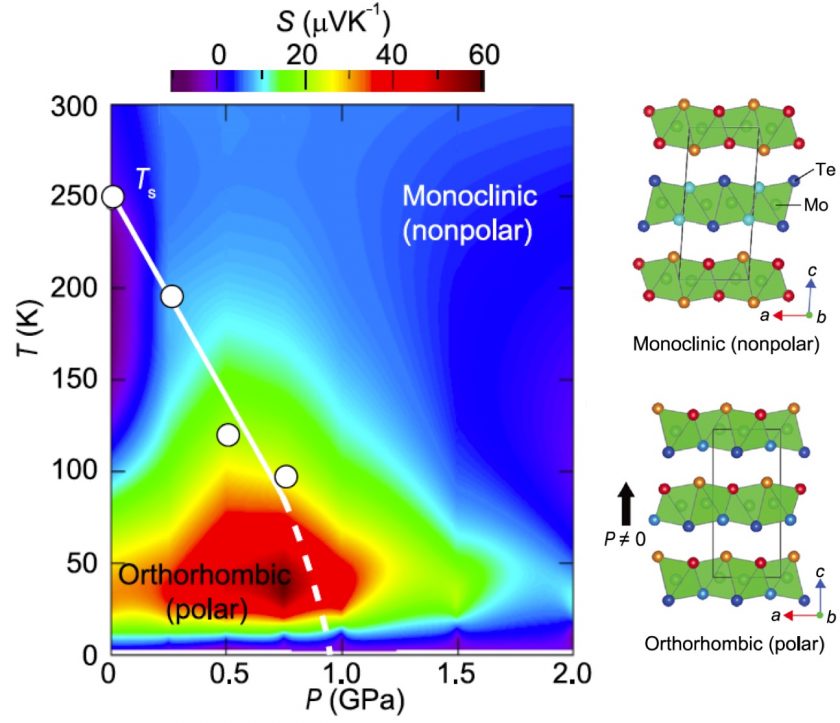A paper on the pressure-induced giant thermoelectric effect in a polar semimetal 1T’-MoTe2 was published in Physical Review B (Hidefumi Takahashi and Kento Hasegawa et al.).
https://journals.aps.org/prb/abstract/10.1103/PhysRevB.100.195130
1T’-MoTe2 is a rare metal with a polar structure at the lowest temperature, and is known to undergo a phase transition to a nonpolar structure at higher temperatures than 250K. Takahashi and Hasegawa found that when the polar metal phase in 1T’-MoTe2 was destabilized by applying a pressure of about 1 GPa, the Seebeck coefficient increased significantly while maintaining high electrical conductivity at low temperatures. Furthermore, they succeeded in reproducing the anomalous behavior of the Seebeck coefficient by a semi-quantitative model considering soft phonons related to structural phase transitions and the inelastic scattering with conduction electrons. The results of this research not only clarifies the mechanism of the giant Seebeck effect near the structural quantum critical point in (Mo, Nb)Te2 (H. Sakai et al., Sci. Adv. 2017) . At the same time, it can be said that this work shows a possibility of novel high-efficiency thermoelectric materials utilizing structural fluctuations.
1T’-MoTe2は最低温で極性構造を有する珍しい金属であり、250Kよりも高温側で極性のない構造へ相転移することが知られています。高橋氏と長谷川氏らは1万気圧程度の圧力印加によって1T’-MoTe2における極性金属相を不安定化させると、低温で高い電気伝導率を保持した状態でゼーベック係数が異常に増大することを見いだしました。さらに彼らは、このゼーベック係数の異常な振る舞いを、構造相転移に関係したソフトフォノンと伝導電子の非弾性散乱を考慮した半定量的なモデルによって再現することに成功しました。本研究成果は、(Mo,Nb)Te2における構造的量子臨界点近傍における巨大ゼーベック効果(H. Sakai et al., Sci. Adv. 2017)のメカニズム解明につながると同時に、構造揺らぎを活用した新たな熱電材料の開拓につながる成果だと言えます。

